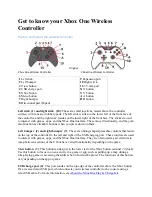
DL205 User Manual, 4th Edition, Rev. B
5–121
Chapter 5: Standard RLL Instructions - Transcendental Functions
1
2
3
4
5
6
7
8
9
10
11
12
13
14
A
B
C
D
Transcendental Functions (DL260 only)
The DL260 CPU features special numerical functions to complement its real number
capability. The transcendental functions include the trigonometric sine, cosine, and tangent,
and also their inverses (arc sine, arc cosine, and arc tangent). The square root function is also
grouped with these other functions.
The transcendental math instructions operate on a real number in the accumulator (it cannot
be BCD or binary). The real number result resides in the accumulator. The square root
function operates on the full range of positive real numbers. The sine, cosine and tangent
functions require numbers expressed in radians. You can work with angles expressed in
degrees by first converting them to radians with the Radian (RADR) instruction, then
performing the trig function. All transcendental functions utilize the following flag bits.
Sine Real (SINR)
The Sine Real instruction takes the sine of the real number
stored in the accumulator. The result resides in the
accumulator. Both the original number and the result are in
IEEE 32-bit format.
Cosine Real (COSR)
The Cosine Real instruction takes the cosine of the real
number stored in the accumulator. The result resides in the
accumulator. Both the original number and the result are in
IEEE 32-bit format.
Tangent Real (TANR)
The Tangent Real instruction takes the tangent of the real
number stored in the accumulator. The result resides in the
accumulator. Both the original number and the result are in
IEEE 32-bit format.
Arc Sine Real (ASINR)
The Arc Sine Real instruction takes the inverse sine of the real
number stored in the accumulator. The result resides in the
accumulator. Both the original number and the result are in
IEEE 32-bit format.
Discrete Bit Flags
Description
SP63
On when the result of the instruction causes the value in the accumulator to be zero.
SP70
On anytime the value in the accumulator is negative.
SP72
On anytime the value in the accumulator is a valid floating point number.
SP73
On when a signed addition or subtraction results in a incorrect sign bit.
SP75
On when a real number instruction is executed and a non-real number was encountered.
Math Function
Range of Argument
SP53
On when the value of the operand is larger than the accumulator can work with.
SINR
TANR
Sta
nd
ard
R
LL
Ins
tru
ctio
ns
COSR
ASINR
DS
Used
HPP
N/A
ý
ý
ý
þ
230
240
2
5
0
-1
2
6
0
















































